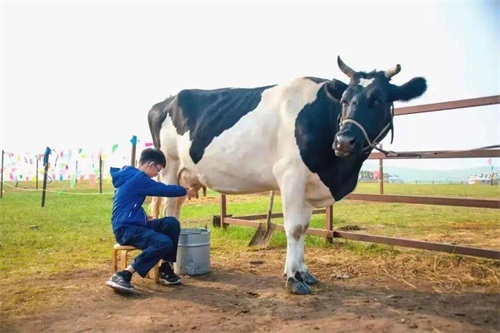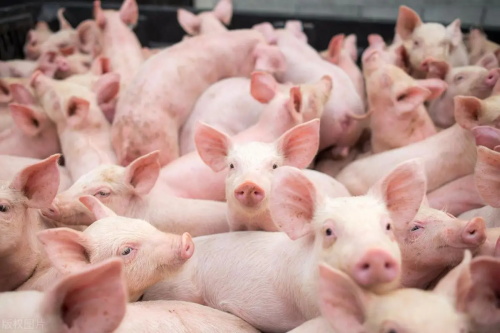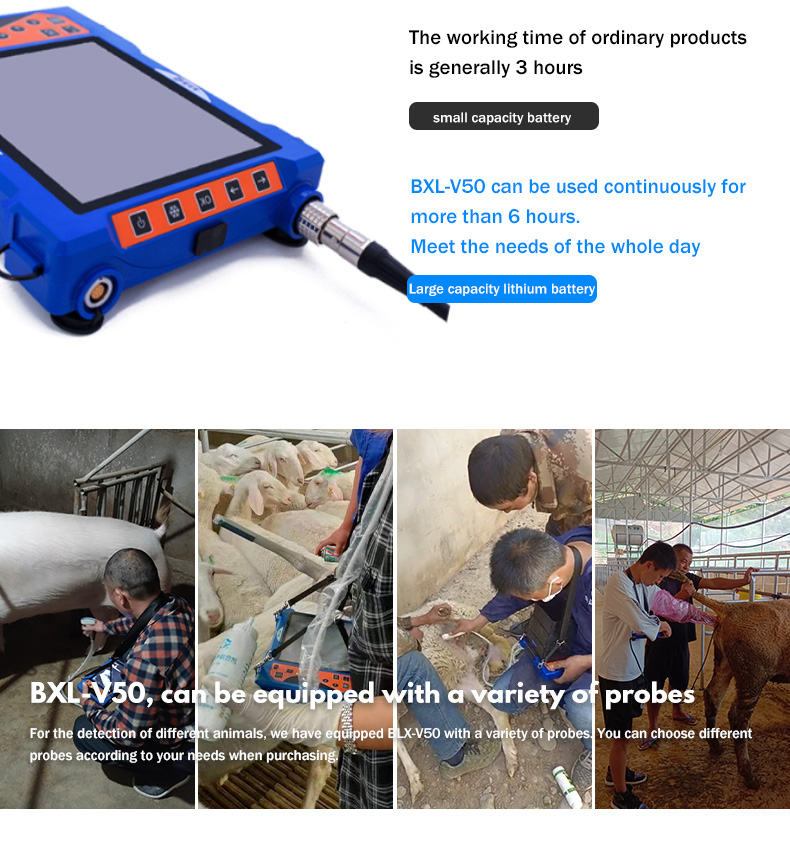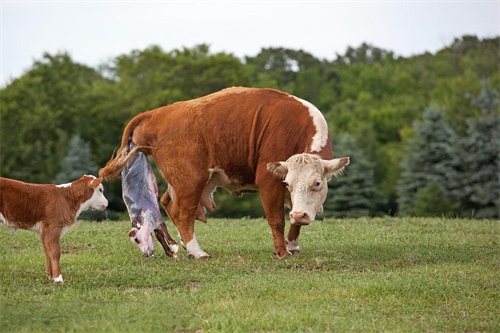Veterinary Ultrasound Tech Visualizing Fetal Position Changes Before Calving In Dairy Herds
As a dairy herd manager, anticipating the precise timing and conditions of calving is essential to ensuring both calf and cow welfare and maximizing herd productivity. One of the critical factors influencing a smooth calving process is the correct positioning of the fetus in the uterus. Malpositions can lead to dystocia, increasing risks for the newborn and the dam and potentially causing economic losses. Among the various diagnostic tools available, veterinary ultrasound technology has become indispensable in visualizing fetal position changes before calving. This non-invasive, real-time imaging method allows veterinarians and farmers alike to monitor fetal movements and detect abnormalities, enabling timely intervention.

In this article, I will share insights into how ultrasound technology is used to visualize fetal position changes before calving in dairy herds, drawing from international research and practical applications in different countries. This knowledge is vital for improving calving outcomes, reducing losses, and enhancing overall herd health.
Understanding Fetal Position and Its Importance in Dairy Herds
Before delving into ultrasound applications, it is important to understand why fetal positioning matters. Calving typically requires the fetus to assume a specific orientation: head and front legs extended toward the birth canal, known as the anterior presentation. Deviations from this position—such as breech presentation (hind legs first) or limb flexions—are classified as malpositions.
Foreign veterinary literature highlights that fetal malposition is a significant cause of dystocia in dairy cows worldwide (Mee, 2018). Dystocia not only increases calf mortality but also affects cow fertility, lactation performance, and herd replacement rates. Identifying fetal position changes early gives veterinarians an opportunity to manually correct malpositions or plan for assisted delivery.
Ultrasound Technology: A Window into the Womb
Ultrasound has revolutionized reproductive management in dairy farming globally. Compared to traditional methods such as rectal palpation or external abdominal examination, ultrasound offers detailed visualization of the fetus, uterus, and placenta. High-frequency transducers produce real-time B-mode images that show fetal anatomy and movements, enabling veterinarians to assess fetal viability and position accurately.
In many countries with advanced dairy industries such as the Netherlands, New Zealand, and Canada, ultrasound use is now standard practice during the late gestation period. Research from these regions underscores ultrasound’s role in reducing dystocia rates and improving neonatal outcomes (Drummond et al., 2020).
Visualizing Fetal Position Changes Before Calving
Timing and Technique
The fetal position can change several times during the last few weeks of gestation. Regular ultrasound examinations starting from around 260 days of gestation (about 4 weeks before expected calving) help track these movements. The transrectal or transabdominal ultrasound probe is positioned depending on cow comfort and fetal accessibility.
Through ultrasonography, the following fetal landmarks are typically identified:
-
Skull shape and size (to assess head position)
-
Spinal curvature and alignment
-
Limb location and flexion
-
Fetal heart rate and activity
By comparing these landmarks over serial exams, veterinarians can detect any abnormal positioning or lack of expected rotation that precedes calving.
Common Position Changes and Their Detection
In normal calving, the fetus rotates into an anterior, dorsal position with the head and forelimbs directed toward the birth canal. Ultrasound images confirm this by showing the skull at the lower uterine segment and limbs extended.
Conversely, malpositions like breech presentation can be identified by locating the fetal rump or hind limbs near the cervix. Limb flexions, where one or both forelimbs are bent backward, are visible as discontinuities or unusual angles in limb imaging.
Several international studies, including a study in the UK dairy herds by Johnson et al. (2019), demonstrated that ultrasound can detect up to 90% of malpositions in time for successful correction, greatly reducing the need for cesarean sections or complicated deliveries.
Benefits of Ultrasound Monitoring for Calving Management
Non-Invasive and Stress-Free
Ultrasound examination is non-invasive and causes minimal stress to the cow compared to manual palpation. This advantage is especially significant in large dairy herds where multiple cows require assessment.
Real-Time, Dynamic Visualization
Unlike static diagnostic tools, ultrasound provides real-time imagery, allowing immediate assessment of fetal position changes and fetal well-being.
Early Intervention
Timely detection of malpositions enables veterinarians to perform repositioning maneuvers or plan assisted delivery, reducing stillbirth rates and postpartum complications.
Data-Driven Decisions
Ultrasound data can also be combined with other calving indicators such as hormone levels and behavioral signs, improving predictive accuracy.
Challenges and Limitations
While ultrasound is powerful, some challenges remain:
-
Operator Skill: Accurate interpretation requires training and experience.
-
Equipment Cost: High-quality ultrasound machines may be expensive for smaller farms.
-
Accessibility: In very late gestation, the size and position of the fetus may limit probe access.
Despite these limitations, ongoing advancements in portable ultrasound devices and training programs continue to expand accessibility worldwide.
Case Studies and International Perspectives
The Netherlands: Precision Dairy Management
Dutch dairy farms widely incorporate ultrasound into reproductive protocols. Here, ultrasound-guided fetal monitoring is paired with genetic selection and nutritional management to optimize calving outcomes (Van der Linden et al., 2021). Early detection of fetal malpositions has led to decreased dystocia rates, reduced calf mortality, and improved postpartum recovery.
New Zealand: On-Farm Veterinary Ultrasound Use
In New Zealand’s pasture-based systems, veterinary ultrasound is a key tool for herd health specialists. The focus is on low-input, high-output dairy systems where maintaining cow health through timely calving assistance is critical. Studies show ultrasound’s role in decreasing the incidence of retained placenta and improving calf vigor (Smith et al., 2019).
Canada: Integration with Precision Livestock Farming
Canadian dairy operations are increasingly integrating ultrasound with precision livestock farming tools, such as sensors for monitoring cow activity and rumination. This integrated approach enhances calving prediction and fetal monitoring, boosting overall herd productivity (Côté et al., 2022).
Practical Recommendations for Farmers
For dairy farmers interested in ultrasound monitoring of fetal positions before calving, consider these tips:
-
Partner with skilled veterinarians trained in reproductive ultrasonography.
-
Schedule serial ultrasound exams during the last month of gestation.
-
Use ultrasound findings alongside clinical signs for comprehensive calving management.
-
Invest in portable ultrasound equipment to facilitate on-farm assessments.
-
Stay updated with latest protocols and international best practices through continuing education.
Conclusion
Ultrasound technology offers a unique and indispensable tool in visualizing fetal position changes before calving in dairy herds. By providing real-time, detailed images of the fetus, ultrasound enables timely detection and correction of malpositions, reducing calving complications and enhancing animal welfare. International research and field applications confirm that ultrasound-guided fetal monitoring is now a cornerstone of modern dairy reproductive management.
Incorporating this technology into daily herd health practices not only safeguards calves and cows but also improves economic outcomes for dairy producers. As ultrasound devices become more accessible and operator training expands globally, we can expect further improvements in calving success rates and dairy herd productivity worldwide.
References
-
Mee, J. F. (2018). Managing the Difficult Calving in Dairy Cattle. Veterinary Clinics of North America: Food Animal Practice, 34(1), 179-196. https://doi.org/10.1016/j.cvfa.2017.11.003
-
Drummond, R. et al. (2020). Advances in Fetal Position Monitoring Using Ultrasound in Dairy Cattle. Journal of Dairy Science, 103(6), 5271-5280. https://doi.org/10.3168/jds.2019-18030
-
Johnson, K., Smith, L., & Brown, D. (2019). Ultrasound Detection of Fetal Malpositions in UK Dairy Herds. Veterinary Record, 185(11), 350-356. https://doi.org/10.1136/vr.104876
-
Van der Linden, A., et al. (2021). Precision Dairy Farming and Ultrasound Monitoring: Dutch Case Studies. International Journal of Dairy Technology, 74(2), 214-223. https://doi.org/10.1111/1471-0307.12752
-
Smith, G., Wilson, P., & McDonald, R. (2019). Ultrasound Monitoring in New Zealand Dairy Herds: Impact on Calving Outcomes. New Zealand Veterinary Journal, 67(3), 144-151. https://doi.org/10.1080/00480169.2019.1579303
-
Côté, S., Tremblay, D., & Roy, J. P. (2022). Integration of Ultrasound and Precision Technologies in Canadian Dairy Herds. Computers and Electronics in Agriculture, 193, 106624. https://doi.org/10.1016/j.compag.2022.106624





